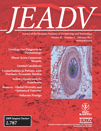New reasons for histopathological nail-clipping examination in the diagnosis of onychomycosis
Conflict of interestNone declared.
Funding sourcesNone declared.
Abstract
Background Onychomycosis is a common problem. Today, the gold standard in the diagnosis of onychomycosis is the direct microscopy and fungal culture. But direct microscopy is regarded as having a low sensitivity and fungal culture takes long time. In addition, in cases of controlling the antifungal treatment course, the present gold standard is often not a reliable tool because of the inhibition of the fungal growth in the culture.
Objective The purpose of this study was to compare the present gold standard with histological examination with periodic acid-Schiff staining (PAS) of nail clippings in the diagnosis of onychomycosis in a large cohort.
Materials and methods We prospectively evaluated 1146 nail samples from 851 patients with clinical signs of onychomycosis using direct microscopy and fungal culture in comparison with PAS-stain.
Results A total of 631 nail samples revealed a positive result in at least one test. The most sensitive single test for the diagnosis of onychomycosis was PAS with 82%, followed by culture (53%) and direct microscopy (48%). In 64 cases, in which a prediagnostic antimycotic treatment has been initiated, PAS showed to have by far the highest sensitivity (88%) in comparison with culture (33%) or direct microscopy (50%).
Conclusions Periodic acid-Schiff staining is the single method with the highest sensitivity in terms of detection of fungal elements (hyphae) in nail specimens. Especially in cases with prior antifungal treatment, histological analysis of PAS-stained nail clippings should be considered as an appropriate diagnostic tool.




